Large Roman bath discovered in second Priory Park dig in Chichester
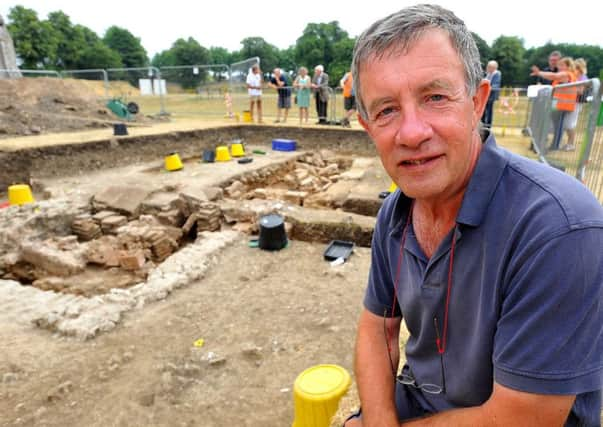

Led by James Kenny, archaeologist for Chichester District Council, a team of ‘dedicated’ volunteers has been working to find out more about the private Roman bath house hidden beneath the park.
The idea is to give members of the public the opportunity to watch archaeology in action and discover more about a period in Chichester’s history which has survived untouched for more than 1,600 years.
Advertisement
Hide AdAdvertisement
Hide AdThe council said this year’s project 'extends the work carried out in 2017', which uncovered the 'very well preserved' remains of part of a Roman bath-house, complete with its underfloor heating system.
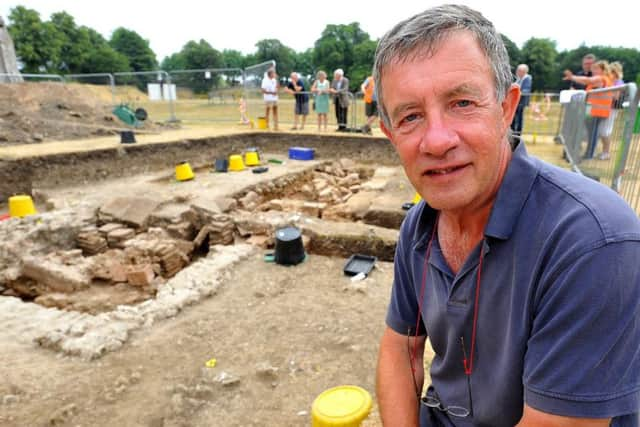

On Saturday July 21 the team will hold a special day for the public, which will include a programme of talks by Mr Kenny to put the work into context and explain what has been found.
Residents and visitors have been able to watch the dig in action from July 10 until July 22, which has led to an ‘amazing public interest’.
Speaking at the media event on July 20, Mr Kenny, who is the only archaeologist in the district council, said: "Effectively we are in the second season of the investigation of a complex of Roman buildings.
Advertisement
Hide AdAdvertisement
Hide Ad“The building we are looking at this year is one we started last year and identified as a Roman bath house.
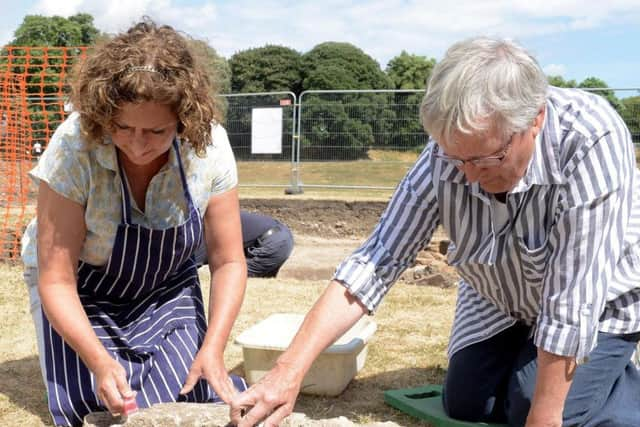

"This year we have excavated as large a trench as we can manage over as much of the bath house as possible in order to identify the individual elements of the building. We can then put them together and see how they work and hopefully get a date.
“The work force comes from the Chichester and District Archaeology Society. They are all volunteers who are giving time away from work or retired people coming in to excavate the site.
"This is an opportunity to pay back the community, to give something to them and allow them to see it happening and understand what it is we are looking at.
Advertisement
Hide AdAdvertisement
Hide Ad“As the excavation has taken place in a public park, we have been aiming to involve the general community of Chichester and any visitors. They can see exactly what we are doing, talk to the diggers, see the finds being made, taking the excitement of the discovery. They can see the archaeology appearing from beneath their feet.
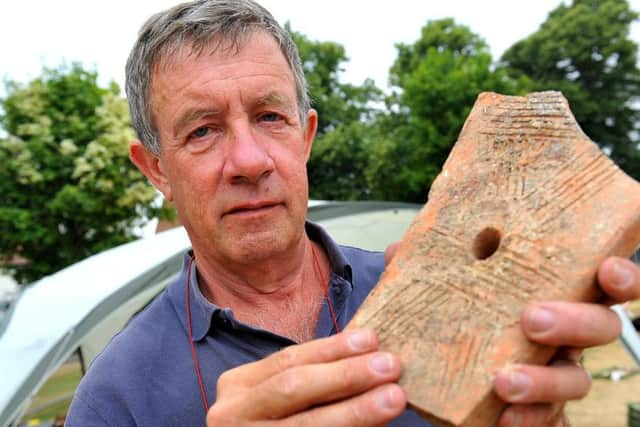

“People have been standing around the sides and bombarding us with questions.”
A section that was uncovered last year was first thought to be part of the roof which had collapsed into the heating system. However, the team has discovered that it is a luxurious tub made from mortar, tiles and bricks and its size proves the theory that the site was owned by someone very wealthy.
Mr Kenny added: “The exciting discovery really is the large part of a Roman bath suite, comprised of a very hot room, which has an under-floor heating system.
Advertisement
Hide AdAdvertisement
Hide Ad"We have discovered part of the bath lying in amongst the remains. We have found elements of all these rooms and good evidence to be able to identify what went on.
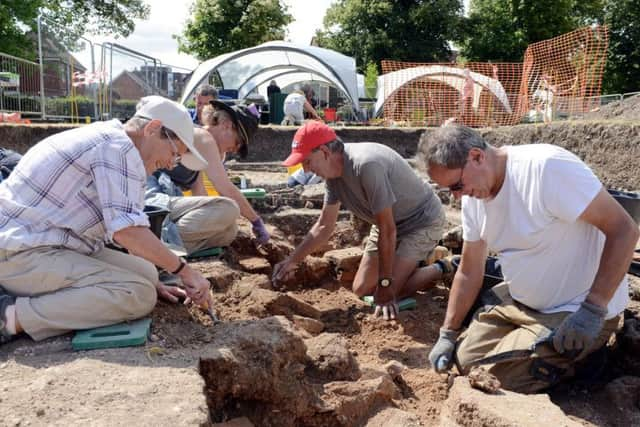

"We are pretty certain we have found all of the warm and hot rooms and a corridor leading to another part of the establishment.
"What would have happened is they walked out of their very posh house, somewhere nearby, into a warm room to get warmed up, into the hot room, where they really would have started to sweat, have a servant to scrape all the muck of your body, and then down the corridor into the changing room, get revitalised and off you go.
"It is a particularly well appointed, private bath house for a small town like Chichester was back then. It is obviously the property of someone very rich. For it to have worked efficiently, it would have to be kept in heat permanently, so it's not only the expense of owning it but also maintaining it.
Advertisement
Hide AdAdvertisement
Hide Ad"It would have required staggering amounts of charcoal for the furnace and a considerable amount of tending and stoking to keep it going.
“This conspicuous consumption would have highlighted that the person or people who lived here were affluent and of high status.
"People who lived here would have had their friends and business associates round and basically be showing it off to everybody in Chichester. They were the poshest people here.”
The archaeological team also uncovered the foundation of an arch which would have supported a dividing wall, separating the bath house into hot and warm rooms and they have found more of the heating system, known as the hypocaust.
Advertisement
Hide AdAdvertisement
Hide AdOther Roman finds include tiles, some of which would have helped form the arches, and numerous pottery fragments.
Volunteer Pauline Norris, from the finds team, said: “We’ve found some really lovely pottery and that’s great especially when they are washed and cleaned.
"They will be brought in, in trays, which have numbers on them which apply to the places in trench so that we know exactly where they came from. My job is to make sure we never mix up those things. If you can date the pot, you know exactly how old that particular piece of archaeology is.
“It’s great fun and it’s very social. We get to know each other very well. We’ve got the most amazing materials from the bath house. We’ve found so much more of the place than last year.
Advertisement
Hide AdAdvertisement
Hide Ad"Every dig has a certain profile to it in terms of finds so you can dig here and somewhere else but not find the same stuff. From doing one area often, you become acclimatised to the type of plaster. Everything we find, we have to weigh, catalogue so that in the end we can tell how much plaster was here. Some clever people can work out how big it was.”
The council revealed that a future dig has 'not yet been confirmed', but if another was to take place it would focus on 'making a connection between this bath suite and the house that it served'.
Mr Kenny believes that the separate Roman house could be 'nearby' but admitted that it could be left undiscovered. However, he expressed his desire to 'continue the project'.
“Towns that have been occupied for thousands of years obviously contain archaeology which has been impacted on by all of the activities going on there," he said.
Advertisement
Hide AdAdvertisement
Hide Ad"A town like Chichester would have started in the early Roman period. Any cesspit or well that has been dug since the Roman period is likely to have destroyed archaeology.
"It is really only parts of the city that have been preserved over the years, that we are likely to find this sort of continuous preservation of archaeology on this scale and that is a rare thing for somewhere like Chichester.
“With the presence of a Roman private bath suite, it can only be assumed that there is a house to go with it. It will be close by, probably a few yards from where we are now, but it remains to be discovered. It may not have survived but hopefully we can come back in the future and continue this project to make the link between the bath house and the domestic establishment."
The council confirmed that all the finds from the dig will be 'recorded and catalogued', and the site 'refilled and returned to parkland'.
They all said that people can also find out more by visiting the Novium Museum in Tower Street, Chichester, which contains the remains of a Roman bathhouse as well as a permanent Roman exhibition.